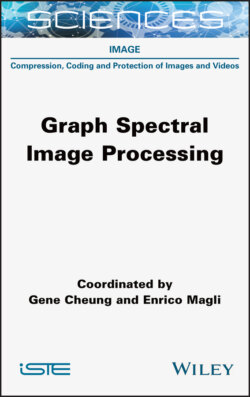Читать книгу Graph Spectral Image Processing - Gene Cheung - Страница 13
I.3. Graph spectrum
ОглавлениеDenote by W ∈ RN×N an adjacency matrix, where the (i, j)th entry is Wi,j = wi,j. Next, denote by D ∈ RN×N a diagonal degree matrix, where the (i, i)th entry is Di,i = j Wi,j. A combinatorial graph Laplacian matrix L is L = D − W (Shuman et al. 2013). Because L is real and symmetric, one can show, via the spectral theorem, that it can be eigen-decomposed into:
[I.2]
where Λ is a diagonal matrix containing real eigenvalues λk along the diagonal, and U is an eigen-matrix composed of orthogonal eigenvectors ui as columns. If all edge weights wi,j are restricted to be positive, then graph Laplacian L can be proven to be positive semi-definite (PSD) (Chung 1997)2, meaning that λk ≥ 0, ∀k and xLx ≥ 0, ∀x. Non-negative eigenvalues λk can be interpreted as graph frequencies, and eigenvectors U can be interpreted as corresponding graph Fourier modes. Together they define the graph spectrum for graph G.
The set of eigenvectors U for L collectively form the GFT (Shuman et al. 2013), which can be used to decompose a graph signal x into its frequency components via α = Ux. In fact, one can interpret GFT as a generalization of known discrete transforms like the Discrete Cosine Transform (DCT) (see Shuman et al. 2013 for details).
Note that if the multiplicity mk of an eigenvalue λk is larger than 1, then the set of eigenvectors that span the corresponding eigen-subspace of dimension mk is non-unique. In this case, it is necessary to specify the graph spectrum as the collection of eigenvectors U themselves.
If we also consider negative edge weights wi,j that reflect inter-pixel dissimilarity/anti-correlation, then graph Laplacian L can be indefinite. We will discuss a few recent works (Su et al. 2017; Cheung et al. 2018) that employ negative edges in later chapters.
